5 Things You Need to Know About Cupid
Cupid is the ancient Roman god of love and the counterpart to the Greek god Eros. It’s him who inspires us to fall in love, write love songs...
Valeria Kumekina 14 June 2024
11 January 2022 min Read
Let’s talk tiles! Come on a journey to explore mosaic techniques and terminology with artist and tutor Alison Pierse. If you don’t know your vermiculatum from your regulatum, then this is for you!
Mosaics are a popular art form within many cultures, and the oldest is thought to be up to 4,000 years old. Not just decorative, mosaic can be architectural; used on floors, walls, ceilings, columns as well as practical public furniture such as benches, fountains, and pools. Some panels can become so valuable that they are removed and re-sited or passed down across generations.
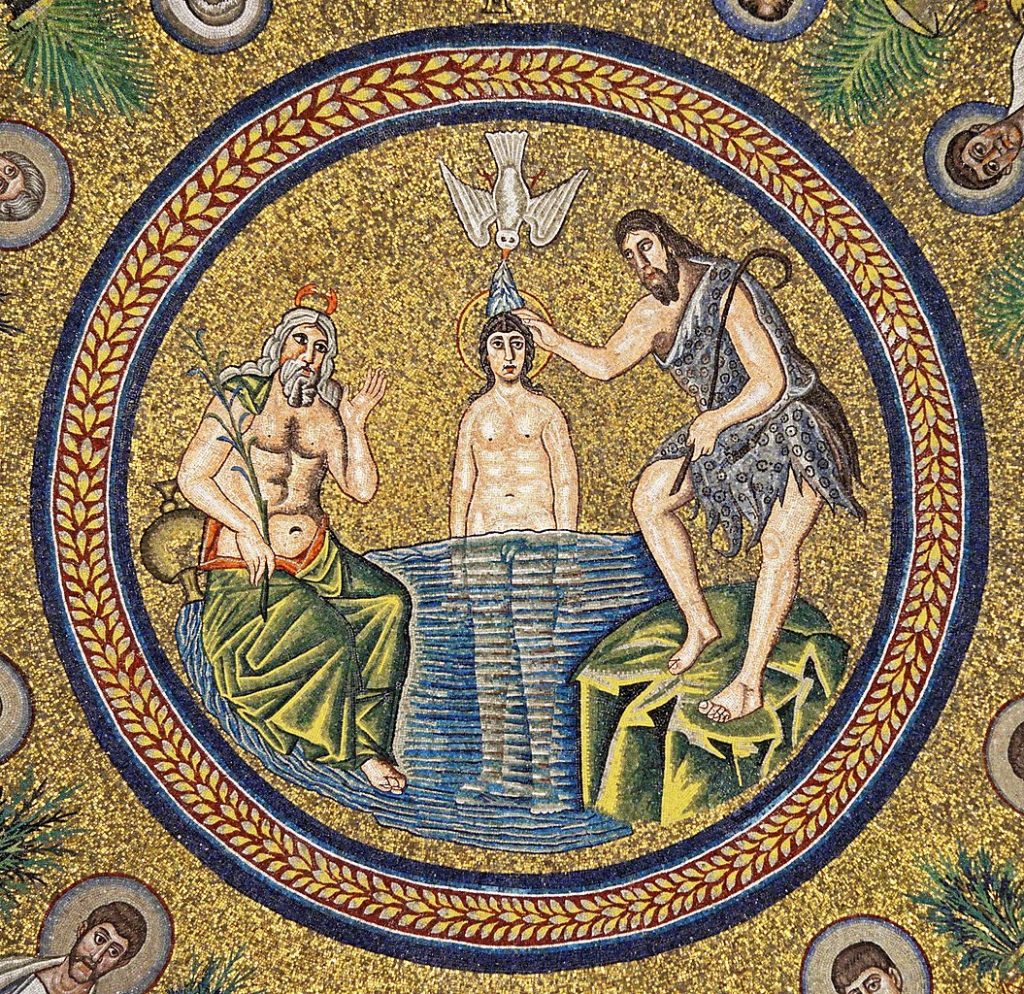
From Mesopotamia to Ancient Greece, and from Roman times to the Modernists, so many cultures and art movements have been drawn to the durable, hard-wearing, and low maintenance art of the mosaic. There is an incredible range of stylistic, artistic, religious, and cultural mosaic themes to explore, but as a starter, some note-worthy periods to check out for historical mosaic work are Mesopotamian, Greek, Roman, Byzantine, Islamic, Early Christian, and Mesoamerican.
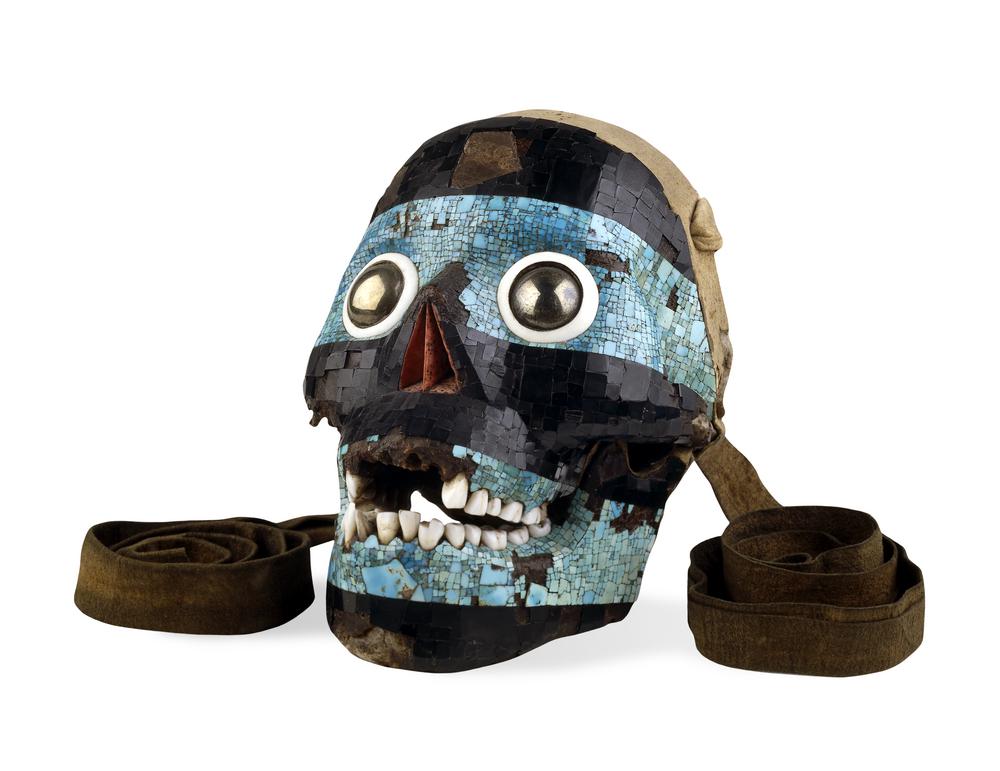
Alison Pierse is an award-winning educator and artist, based in Aberystwyth, a beautiful University town on the coast of mid-Wales. She teaches courses in painting and mosaic and leads walking art-discovery tours around her home town. A power-house of energy, she also runs her own mosaic business, offering pieces for sale, as well as creating specialist commissions that she sends out across the world. Alison has encyclopedic knowledge of mosaic history, so we asked her to give us a whistle-stop tour of this gorgeous art-form. Mosaic terminology 101 – let’s get started!
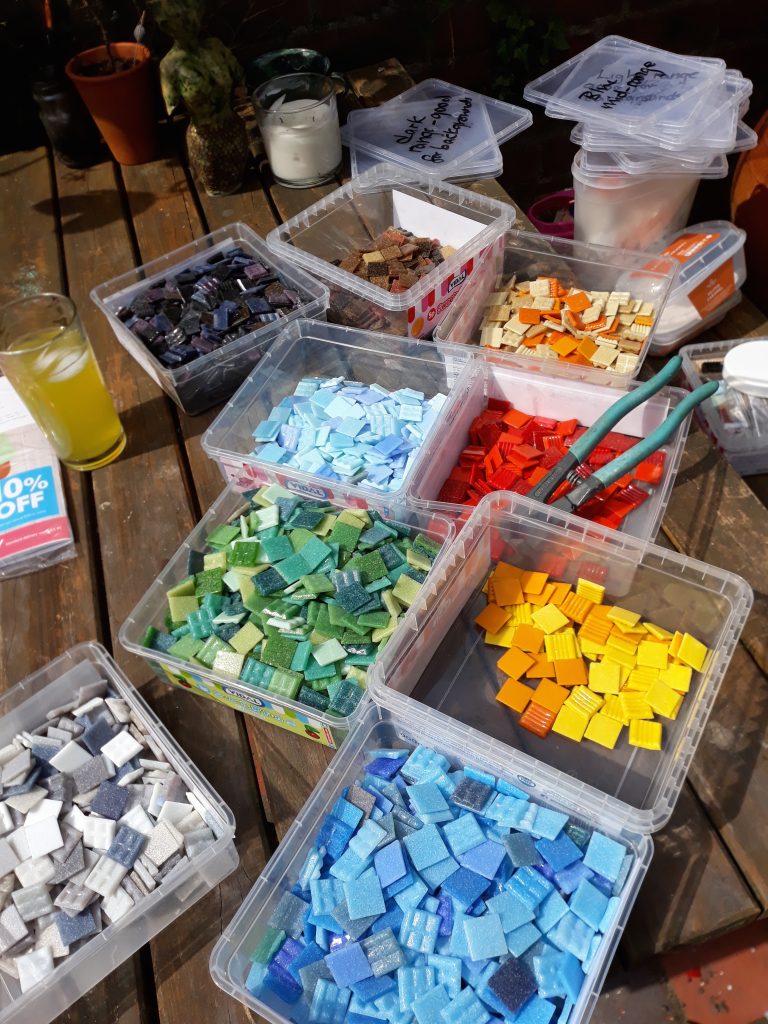
The world mosaic derives from the Latin Mosaicus, and before that the Greek word Mouseios. This means belonging to the Muses, signifying an artistic pursuit. Mosaics can be made from any durable material: pebbles, small bricks, marble, glass, pottery, terracotta, ivory, mother-of-pearl, shells, or other natural materials. Modern mosaics and street art are even being made from found objects and bottle caps. The materials are arranged into patterns or pictures to create a unified whole. The correct name for a small individual piece of mosaic tile is tessera (plural tesserae). The Romans had Latin names for the differing ways that the tesserae are set down:
Opus Vermiculatum: the tiles are placed around the central subject like a worm. The lines of tiles flow around the edges of letters or images.
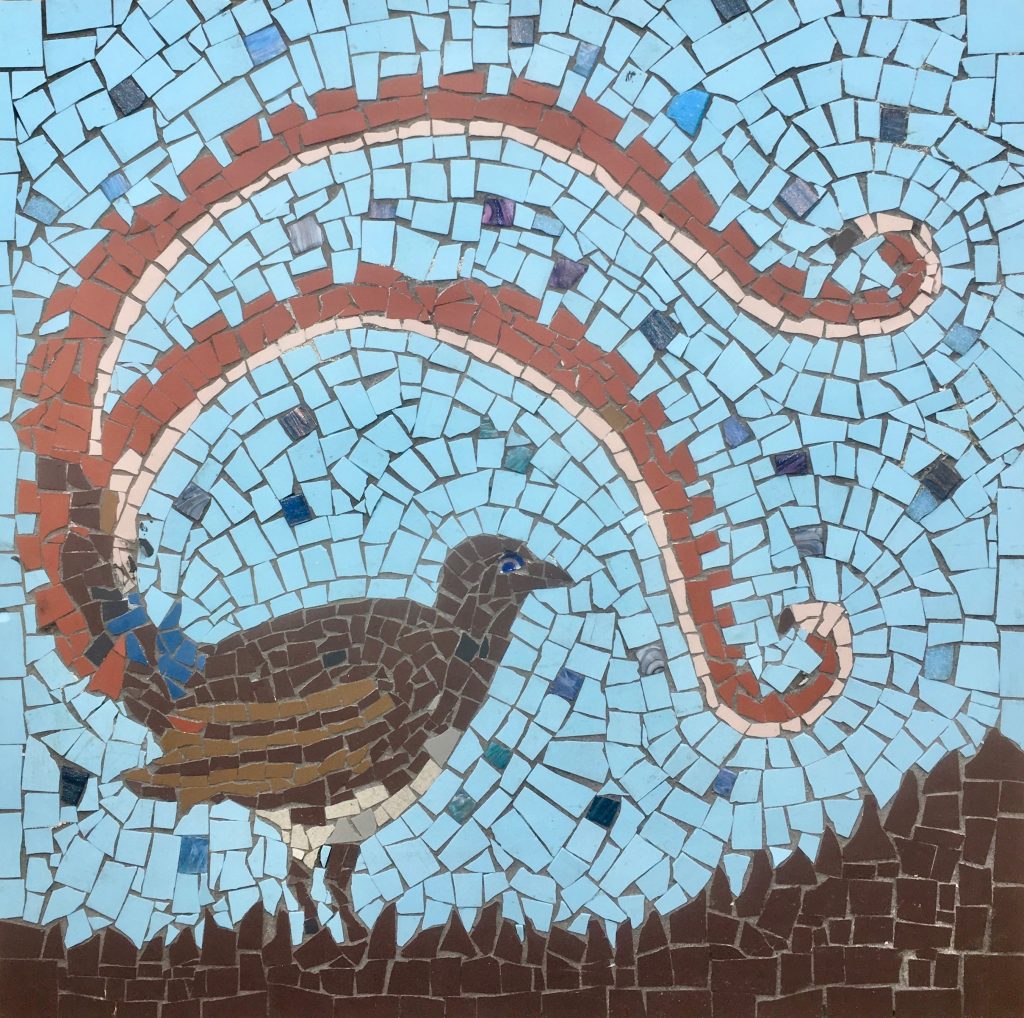
Opus Regulatum: the tiles are placed around the central subject creating a background, like a grid. Tiles align both vertically and horizontally.
Opus Musivium: repeated rows of tiles spread out like ripples on a pond, following the subject to the edge of the mosaic.
Opus Circumactum: think of the background created like a series of overlapping fans or semicircles.
Opus Tessalatum: the background is like a brick wall.
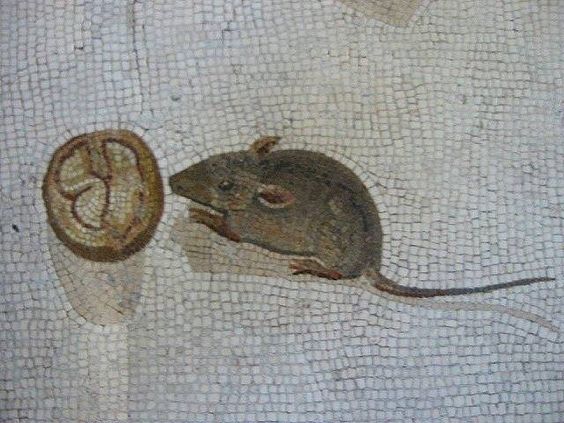
Opus Palladianum: Instead of forming rows, tiles are random and irregularly shaped. This can be likened to ‘crazy paving’.
Micromosaic uses tiny tiles for things like jewellery and religious icons.
The word opus is, of course, not restricted to mosaic-making. It simply refers to a piece of artistic work. The spaces between the tesserae are interstices. Wide spacing was common in Byzantine art, but the solidity of a mosaic usually depends on fairly close fitting tiles. There are two main methods of creating a mosaic. The direct method is, as the name suggests, applying tiles directly to a supporting surface. Vases, jewelry, and other small objects suit this method, although historically it would have been used for ceilings and walls. With the indirect method, the mosaic can be prepared off-site in the studio on a backing paper and transported when ready. Modern benches and murals are often made this way.
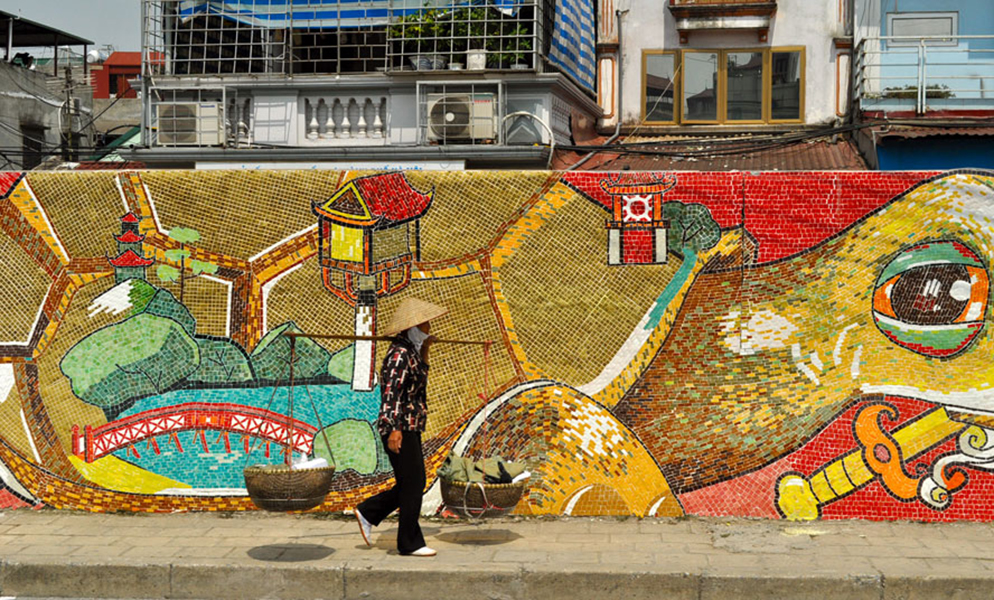
Alison Pierse has used both methods of mosaic making, working on giant public commissions, but also creating highly personalized, one-off pieces on commission. She talks us through the process involved in her own mosaic art.
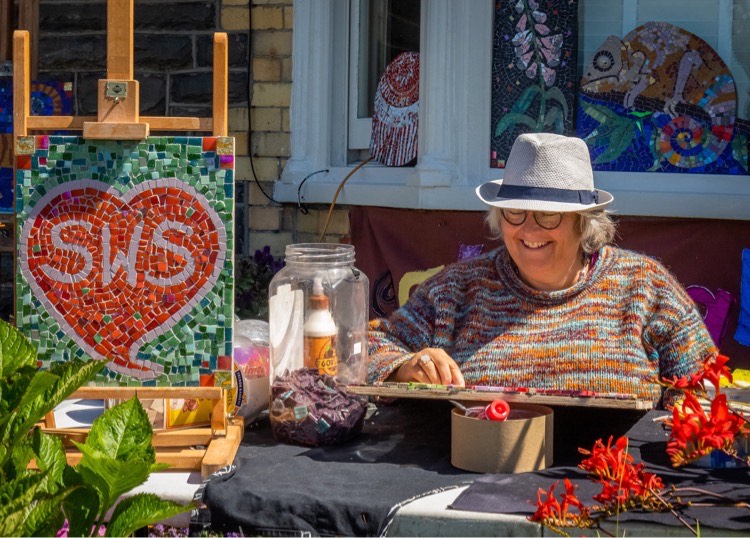
AP: Work always starts with drawing a design, usually in a sketchbook. A full-size line drawing is often called a cartoon. The drawing is then transferred onto marine plywood which may be overlaid with a plastic mesh substrate. The mesh allows a completed mosaic to be transferred directly onto a wall or other location.
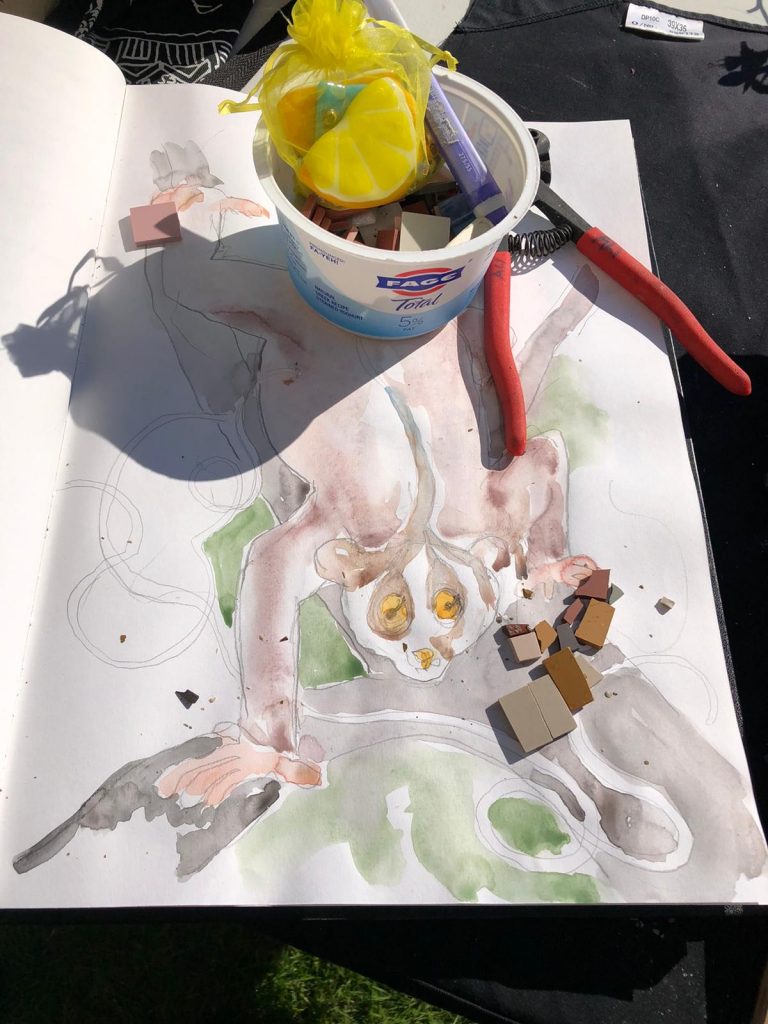
AP: I then begin making the image, bonding the mosaic tiles to the mesh using a waterproof PVA adhesive. If the work is a stand-alone piece, I work straight onto the marine plywood. I employ traditional mosaic techniques with a distinctive flow of design. This is called andamento.
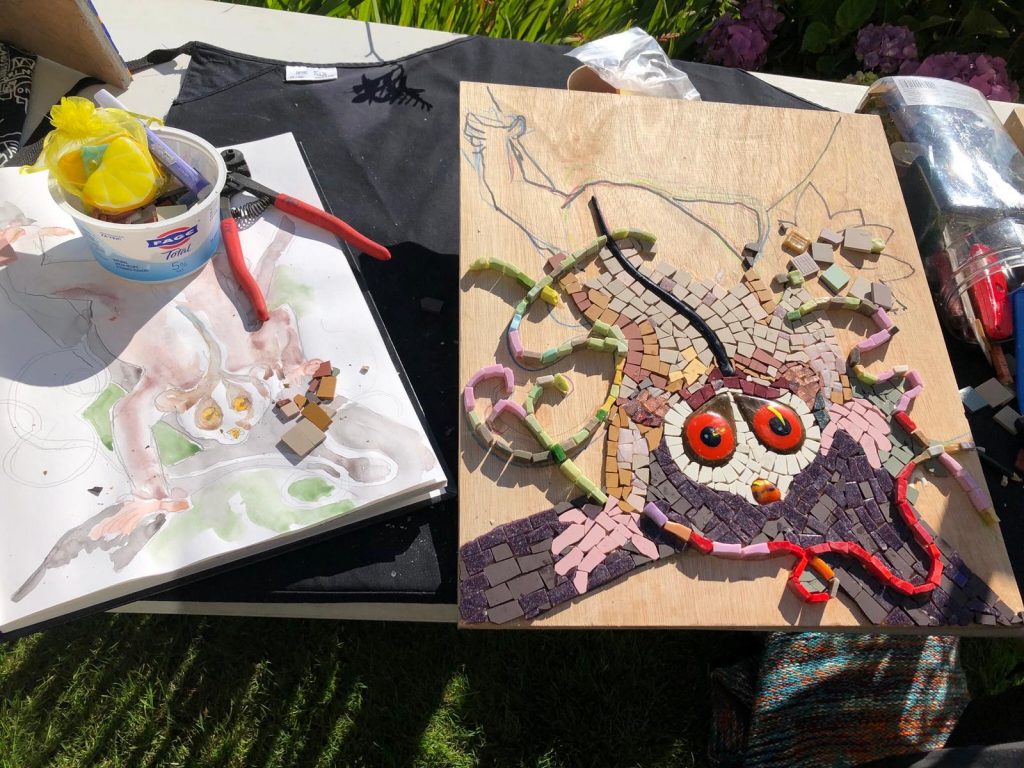
AP: I favor the Arts and Crafts technique of peppering. This is the art of creating background tiling which flows around the object, but which is dappled with a different/contrasting color to create a little more interest.
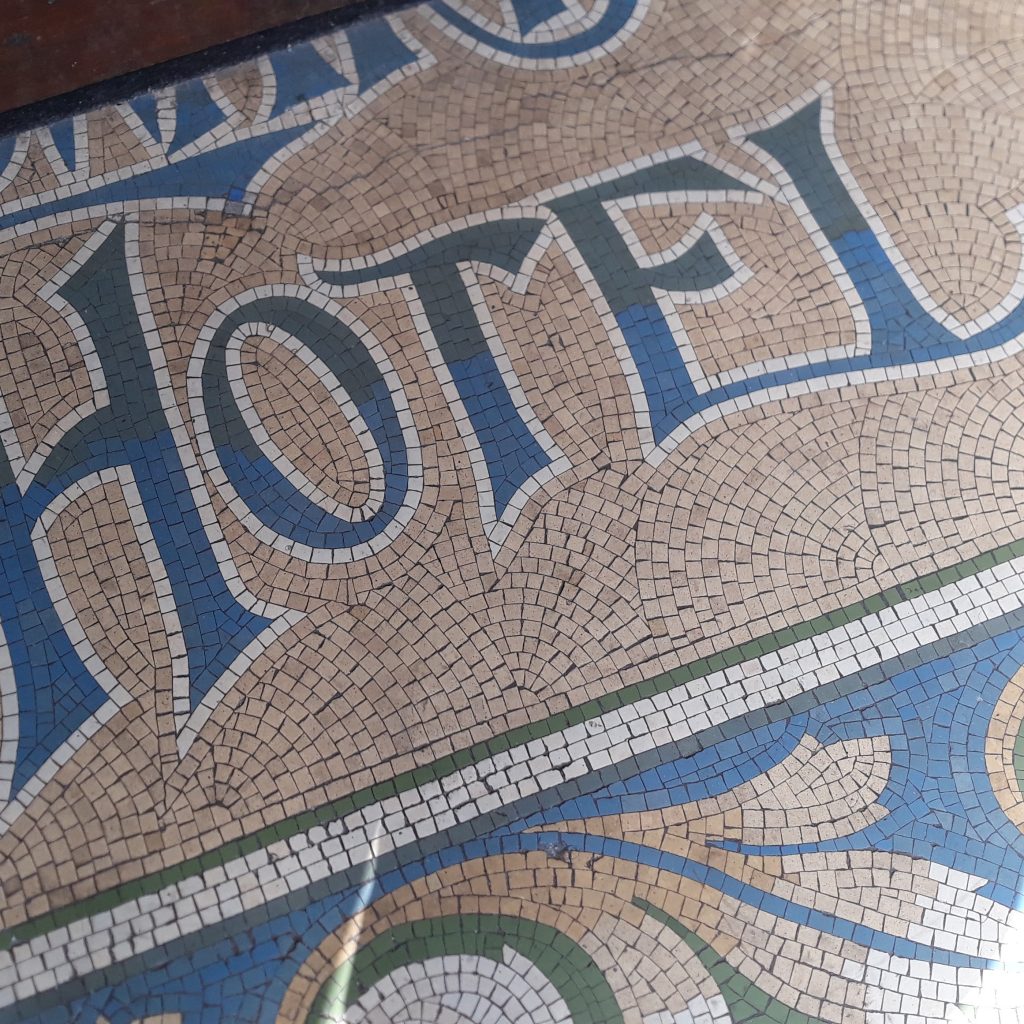
AP: Interestingly, the relatively short Arts and Crafts period in mid-19th century Britain spurred a resurgence of mosaics, which commonly took the form of shop entrance footplates and shop signs. My hometown in Aberystwyth retains many original shop entrance doorways and we also have a Charles Voysey mosaic set into a curved tower on our University building on the seafront promenade.
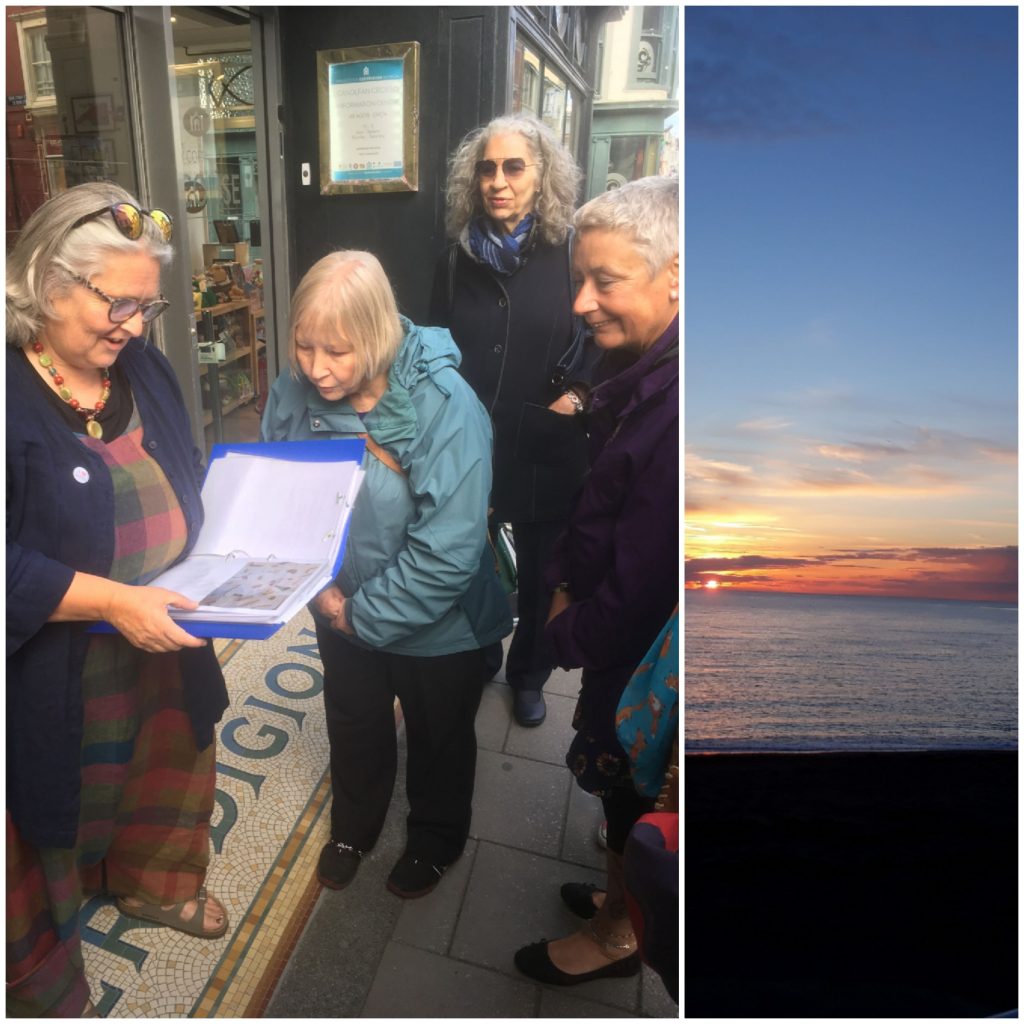
AP: Charles Francis Annesley Voysey was an English architect and furniture/textile designer, born in 1857. His work is known for its distinctive and elegant Arts and Crafts style. The Victoria and Albert Museum in London has an extensive collection of his works. His father was an Anglican minister who dared to defy the Victorian church and its literal reading of the Bible. The father was declared a heretic, so went off to set up his own Church! This disregard for authority and dogma was handed down from father to son, as evidenced by the mosaic we have here in Aberystwyth.
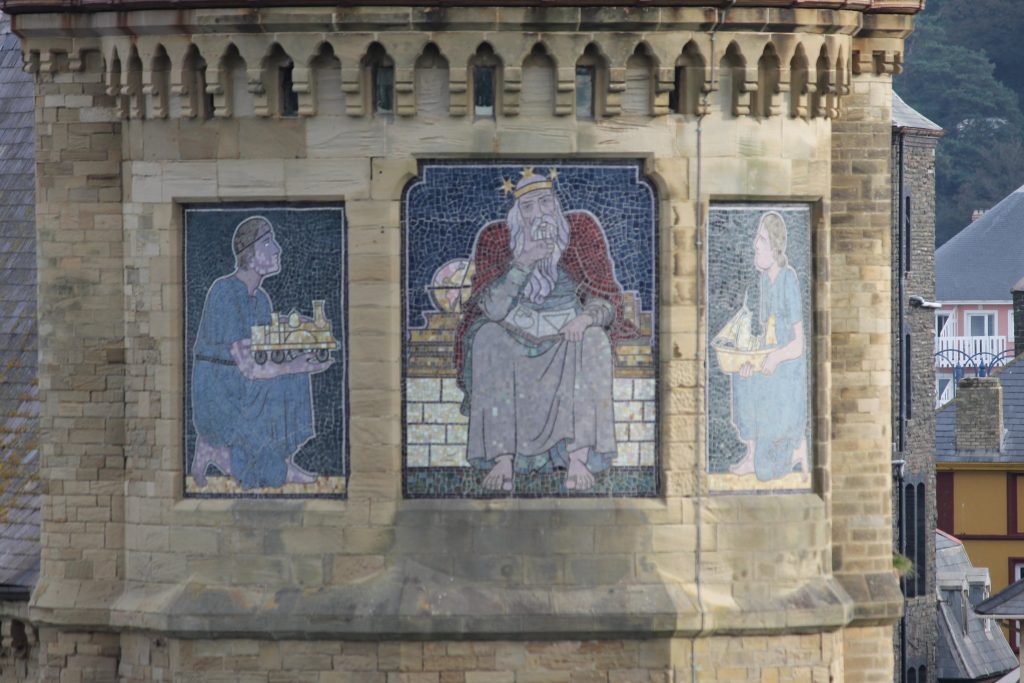
AP: Voysey is well-known for his architecture and textiles, but this is his first ever mosaic piece. It is a large triptych panel and shows Archimedes (mathematician and ancient student of pure science) being presented with the fruits of applied science (a steam engine and a sailing/steam ship) by two acolytes. Rumour has it that the young man with the ship is none other than Voysey himself! Two years after the mosaic was installed, the University realized that Voysey’s imagery suggests a conflict between the pursuit of science and the restrictions of religious dogma. Apparently Voysey was much amused that they had failed to realize he had thumbed his nose at them!
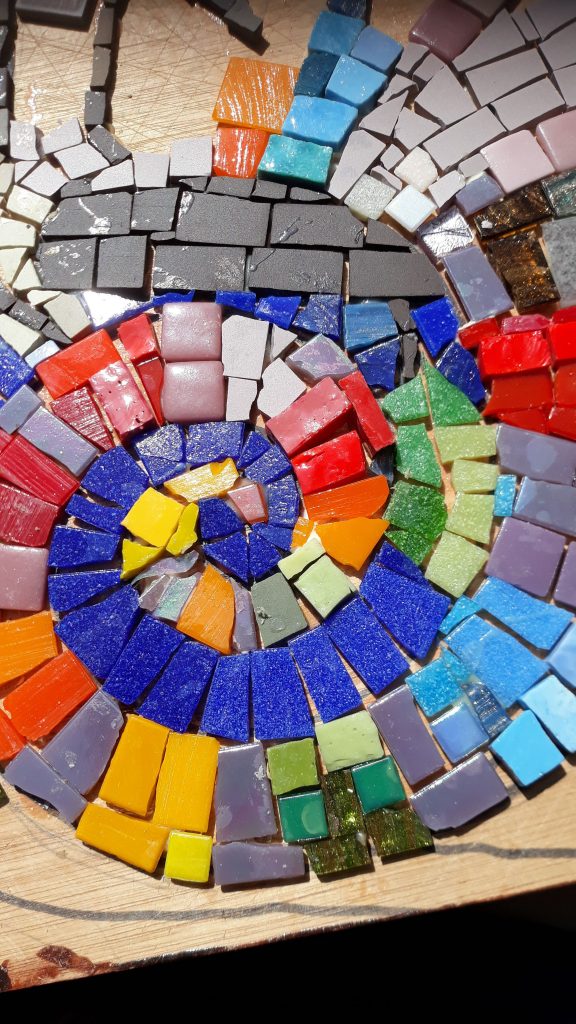
AP: But, from young Voysey, let’s get back to techniques. In my mosaic making I use a mixture of materials:
Cinca tiles: beautiful unglazed but vitrified tiles from Portugal
Broken mirrors: used to create reflective surfaces, giving greater radiance to the piece
Vitreous tiles: glass tiles traditionally used for swimming pools
Smalti: traditional Venetian mosaic pieces, made of glass paste, with air bubbles, which create a raised decorative effect.
Glass fusions: this is a more recent development, invented by Martin Cheek of Broadstairs. I have started to incorporate his bespoke glass fusions into my work.
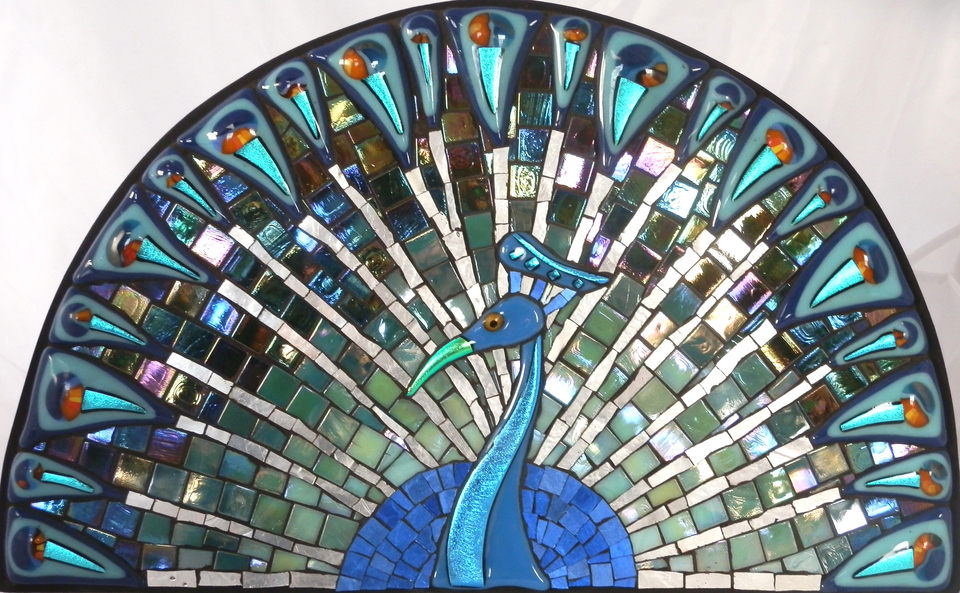
Smalti is a fascinating process, although the exact technique is a closely guarded Italian secret. The sand (silica) within the Venice lagoon is particularly fine so it is no surprise that Venice boasts some of the finest hand-made smalti in the world. In fact, in ancient times most of Murano’s smalti houses were heavily guarded for fear of the skills being taken elsewhere. And the artisans would be prevented from leaving the island for fear of revealing the secret! Did you know, in 1291, by law, the factories were removed out of Venice central on to the small island of Murano for fear of setting Venice buildings alight? Just one factory remains on the main island.”
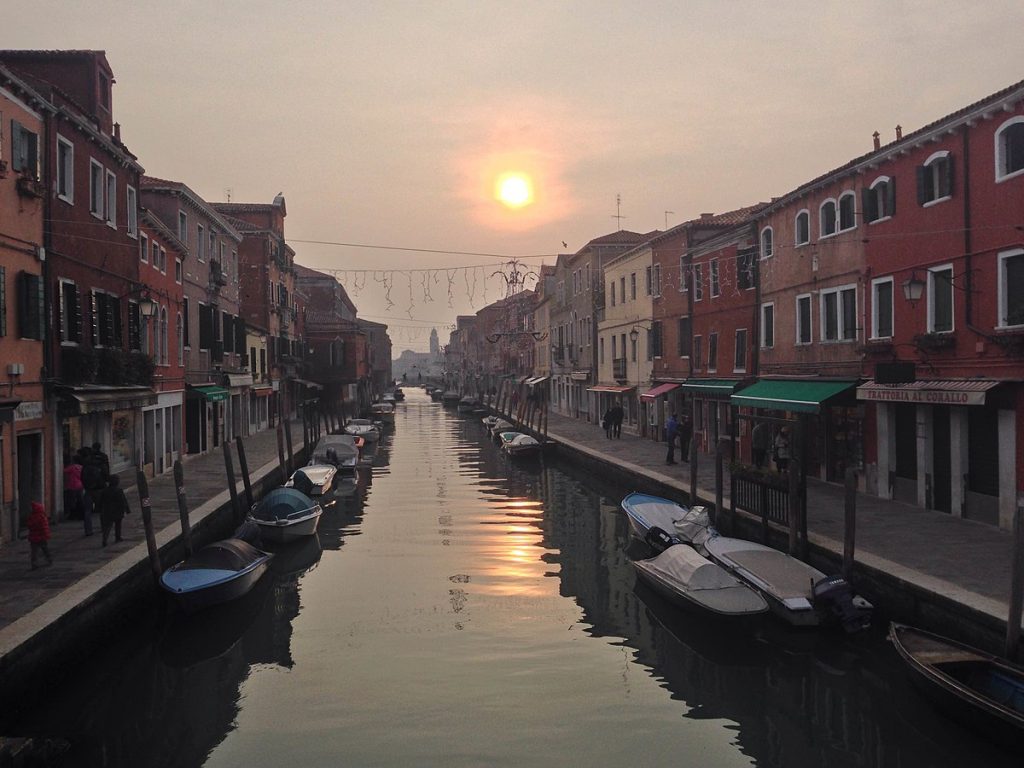
AP: Translated to English, smalti means enamel, but in fact, smalti is made from sand/glass whipped up – like frothing an egg, adding rich pigments to it and then pouring the molten glass onto a metal tray to create a kind of omelette. Once cooled, it is smashed up; within one omelette you can get a variety of subtle variations in colour and air bubbles. The slightly round edges of the omelette are called roti and are prized by artists. The Murano factory, Orsoni, established in 1888, claims to be able to create 3,500 colours.
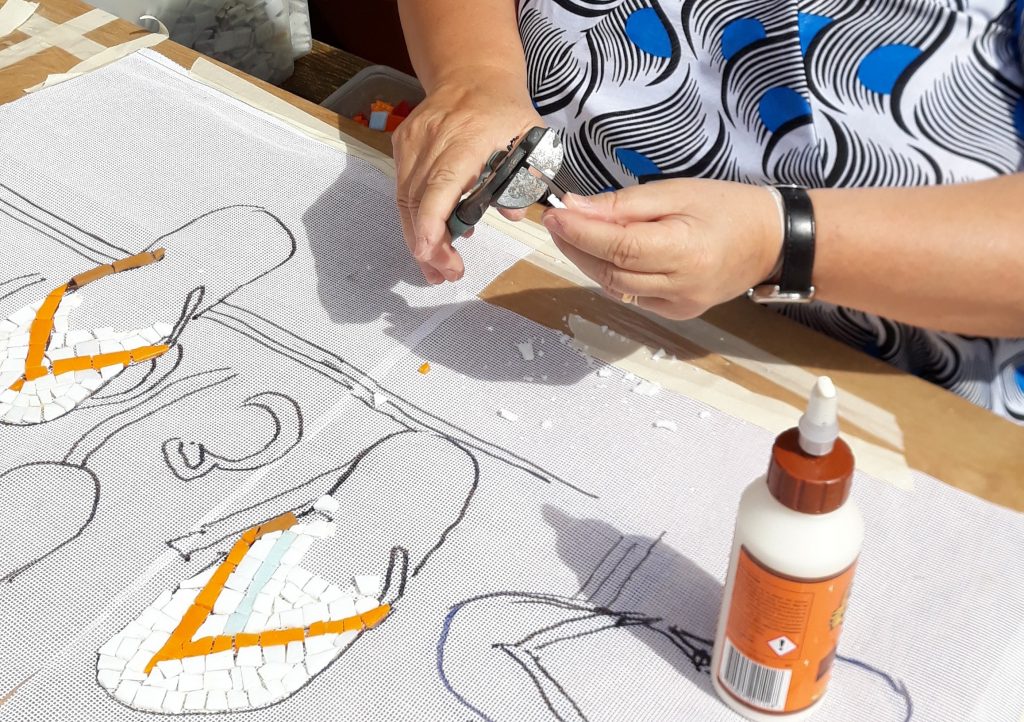
AP: Cutting the tiles is a skill to be honed over hundreds of hours! Accurate cutting is essential to exploit the color and reflective qualities of the tile. My nippers are a precious tool, which self-sharpen. There are two types – side-biters and wheel-cutters. Another traditional tool is a hammer and hardie. The hardie is like a stone-carvers chisel with a cutting edge, and it is used with a hammer.
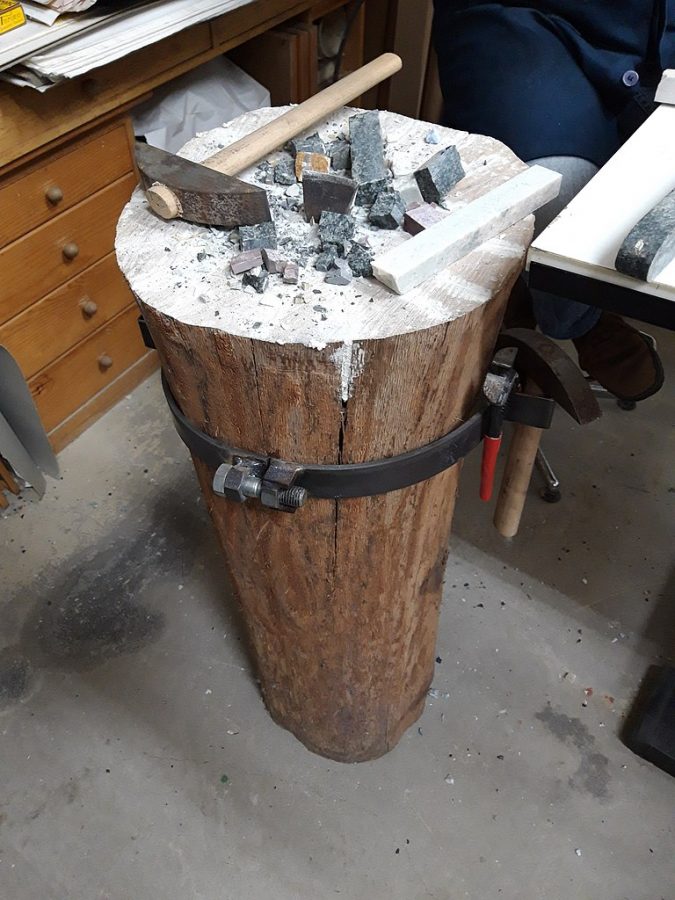
AP: The final stage of any mosaic is grouting, which fills in any gaps between the tiles and helps to strengthen and stabilize the mosaic. This grout work can be done in any color, although I find that a mid-grey grout generally works best for my work. Grout is a fluid mixture, the consistency of thick yogurt, which can be made from lime, cement, fine sand, or marble dust plus water.
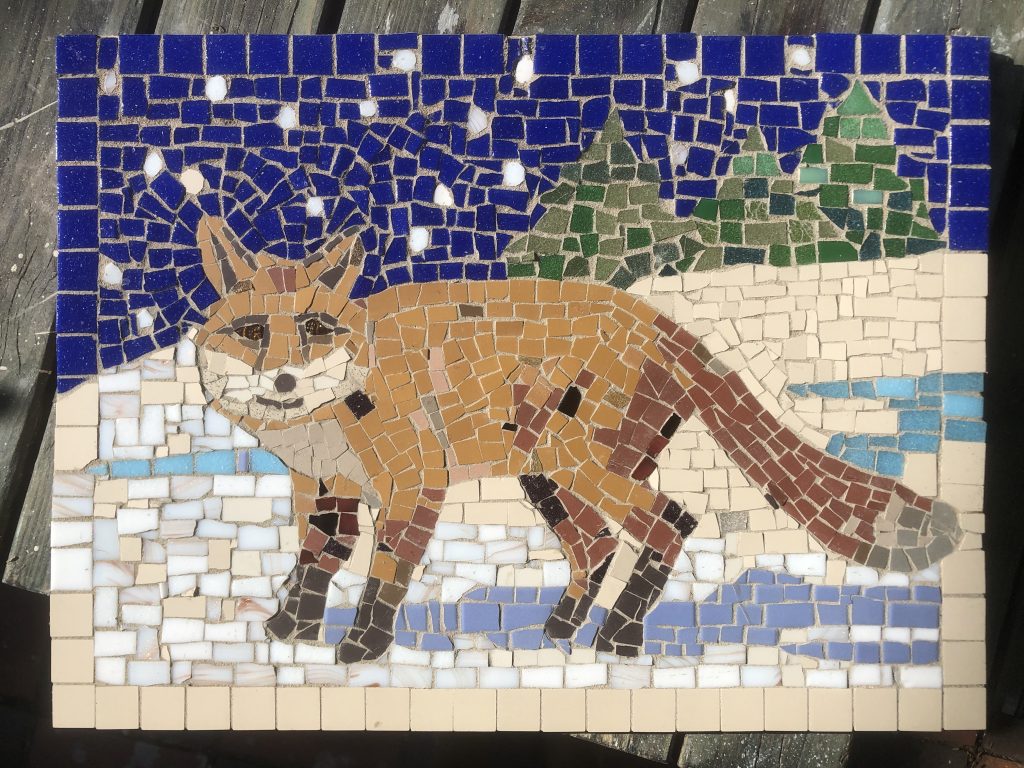
AP: The finished piece then needs to be left to dry (or cure). This might take a few days, depending on the piece. After that, a nice clean and a polish and the work is ready to go! Many mosaic materials are frost-proof and vitreous materials are both non-porous and waterproof.
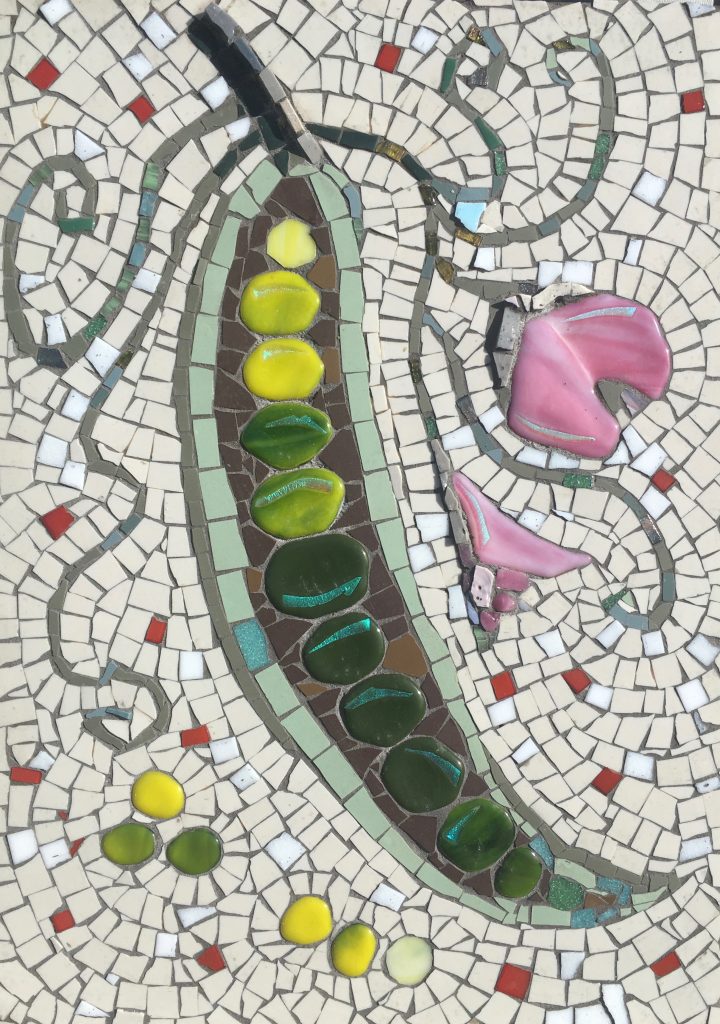
Artistic, functional, colorful, beautiful, and historical. Mosaic reveals the artistry of a civilization, but also give us an insight into their daily lives – who they worshipped, what the seasons meant to them, what they ate, how they spent their leisure time, and even the landscape and homes they inhabited. From awe-inspiring public works to kitchen splash-backs, the mosaic is a versatile art form that is here to stay!
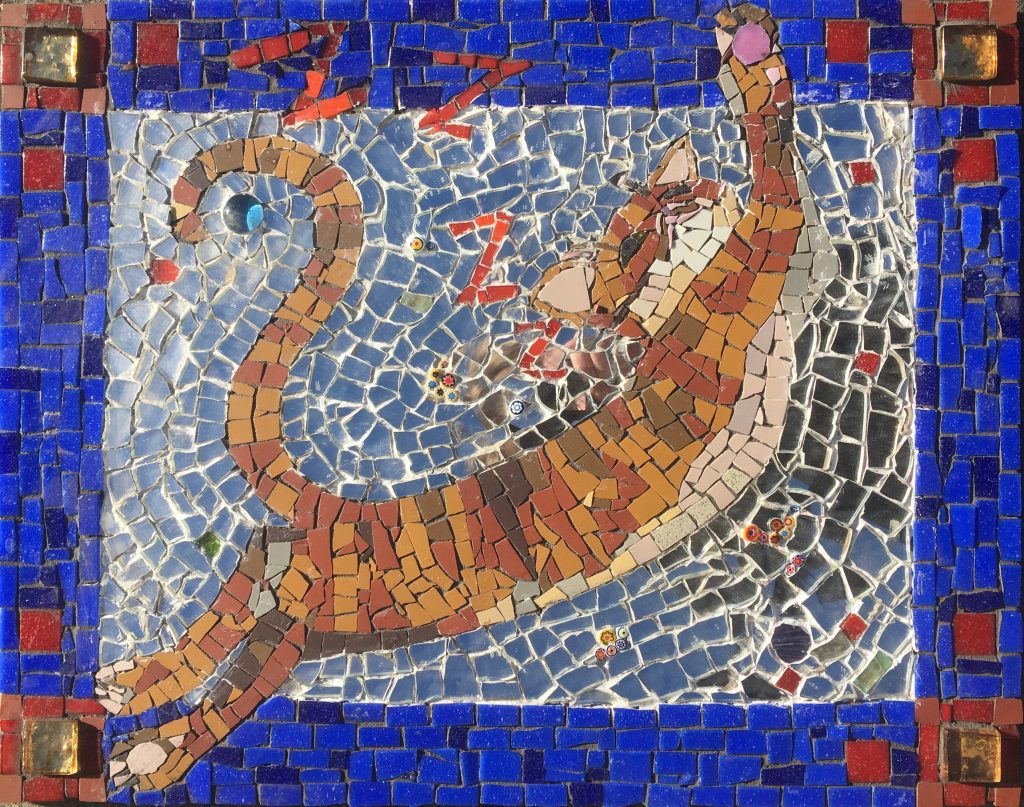
Alison Pierse’s Facebook site posts weekly blogs on mosaic history and mosaic techniques. She teaches painting, runs mosaic courses and walking tours via her website, and also takes commissions for mosaic work, both large and small.
To find out more go to the Artist’s website.
Instagram: fpierseali / Facebook: @aberdabbadoo
DailyArt Magazine needs your support. Every contribution, however big or small, is very valuable for our future. Thanks to it, we will be able to sustain and grow the Magazine. Thank you for your help!